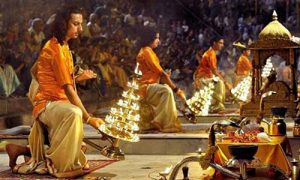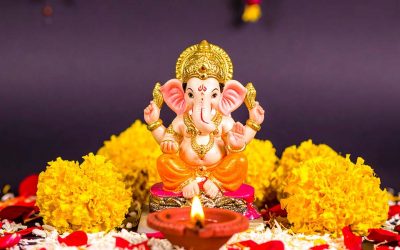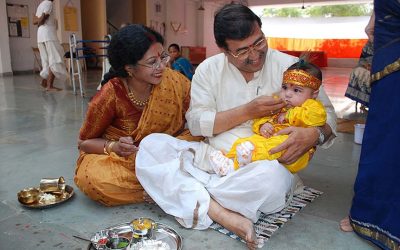The Spiritual Significance of Arti: Why Waving the Light Matters
In Hinduism, many rituals help people feel closer to God. Arti (also spelt Aarti or Arati) is among the most beautiful and meaningful. If you’ve ever been to a Hindu temple or joined a festival celebration, you’ve probably seen it—someone waving a small lamp in front of a statue or picture of a deity, singing songs, ringing bells, and burning incense. This simple act holds deep spiritual meaning.
What Is Arti?
Arti is a Hindu ceremony in which a lamp is lit and waved in circles before a deity. It’s typically performed after a prayer ceremony known as puja. “Arti” is derived from the Sanskrit term Ārātrika, which means “removal of darkness.” It indicates the faith that light is a source of knowledge, peace, and the presence of the divine, whereas darkness symbolizes ignorance and confusion.
Arti is not just a performance. It’s an act of showing love, respect, and thankfulness to the divine. It’s also the time to request guidance, protection, and blessings.
Where Did Arti Come From?
The origins of Arti date back to Vedic days, several thousand years ago, when fire (Agni) was amongst the most holy things. Fire was considered a means of connection between human beings and gods. The offerings were put into the fire to bring them to the divine. With time, this practice became more symbolic and personal. Individuals began using little lamps during prayer to signify light’s energy and connect with God in a more direct, emotional sense.
How is Arti Carried Out?
Arti typically takes a few significant but straightforward objects:
- The Lamp (Diya): Made of metal or clay, filled with oil or ghee, and lighted with a wick made of cotton. Occasionally, the lamp is five-flamed.
- Offerings: Flowers, incense sticks, and food are offered near the deity as symbols of love and respect.
- Music and Chants: Devotional songs (bhajans) are sung, and bells and conch shells are rung to produce a holy atmosphere.
The individual doing the Arti sways the lamp around circularly before God. It signifies the cycle of life and the idea that everything revolves around a circle—birth, life, death, and rebirth.
What Does the Light in Arti Symbolize?
Light represents knowledge, truth, and purity in Hindu philosophy. By presenting a flame to the God or goddess, the worshipper requests to be led away from ignorance and toward wisdom. The flame also symbolizes the soul (Atman). Its rising flicker indicates the soul’s aspiration to ascend above mundane sufferings and achieve a higher plane of peace and consciousness.
So, when one waves the lamp, they’re not merely lighting a flame—they’re presenting themselves to God.
The Five Elements in the Lamp
In certain types of Arti, the lamp contains five flames, each symbolizing one of the five natural elements (Pancha Mahabhutas):
- Earth (Prithvi): Symbolizes strength and support.
- Water (Apas): Symbolizes flow and emotion.
- Fire (Agni): Represents transformation and energy.
- Air (Vayu): Means movement and breath.
- Space (Akasha): Symbolizes openness and spirit.
This makes Arti not just a ritual—but a method of respecting the whole universe and demonstrating that everything is interconnected.

Arti in Daily Life and Festivals
Arti is not just for temples. Many people do it at home, particularly in the morning and evening. It keeps their minds calm and focused through daily practice. It provides a serene routine that begins and ends the day with a spiritual touch.
During major Hindu festivals like Diwali, Navratri, and Janmashtami, group arti is done. Communities and families gather, sing bhajans, and rejoice and worship together. It becomes a compelling method of experiencing togetherness and celebrating faith.
Arti is also performed during special occasions such as weddings, housewarming, and naming ceremonies. During these times, it blesses the location and invites positivity.
What Makes Arti Feel So Powerful
Apart from its religious significance, Arti also influences the mind and emotions positively:
- Concentration and Serenity: The movement, light, and chanting allow the mind to remain present. It’s almost like meditation.
- Happiness and Elevation: The pleasant views, sounds, and aromas evoke a sense of calm and happiness.
- Community: Performing Arti with others generates a strong feeling of community and shared purpose.
On the surface, Arti might seem like just a waving of a lamp. But once you know what it means, you realize that Arti is much deeper. It’s an offering to the spirit, a representation of light over darkness, and a means of connecting to something higher than ourselves. Under the soft light of the flame, we are reminded to pursue truth, release ego, and tread the path of light. Whether performed alone in the home or with a group at a festival, Arti brings peace to the heart and clarity to the mind.






